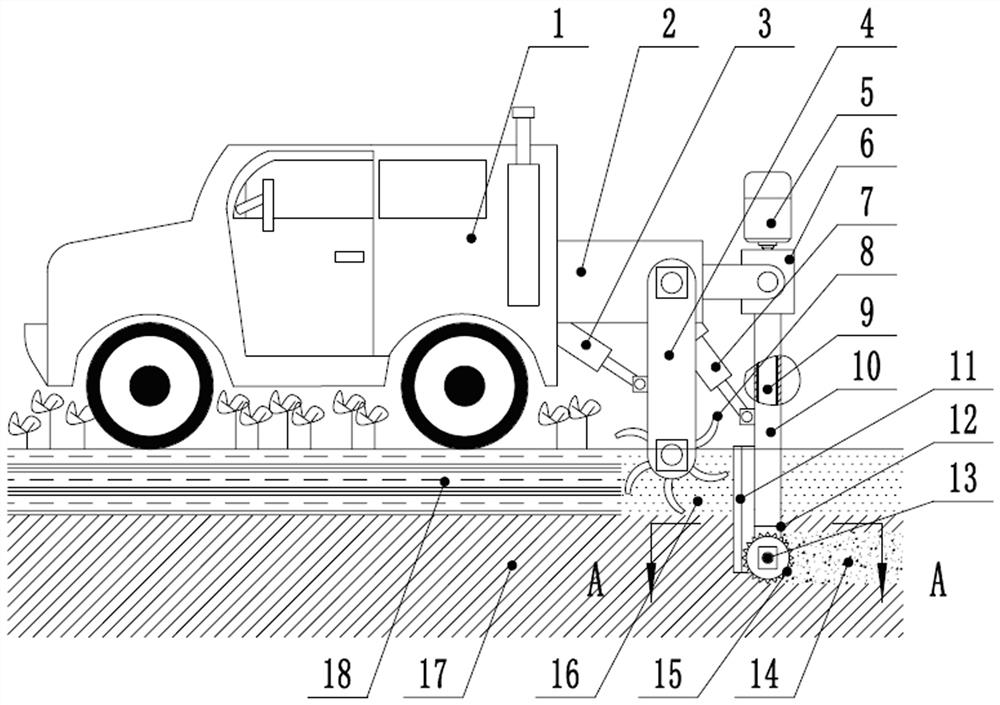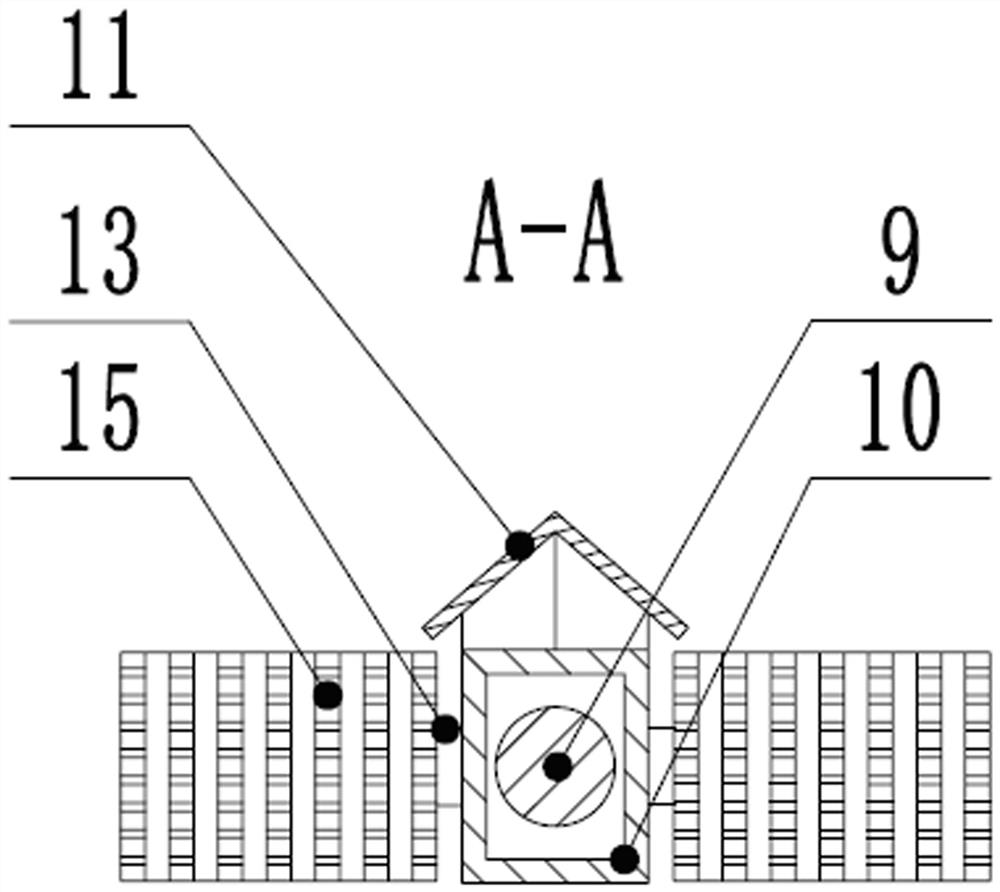Cultivation and Ecological Cultivation Method of Powder Ridge Broken Soil at the Bottom of Paddy Field
A cultivation method and paddy field technology, applied in the fields of rice cultivation, land preparation, agricultural machinery and implements, etc., can solve the problems of increasing agricultural production costs, accelerating soil moisture loss, soil fertility degradation, etc. The effect of reducing the amount of water and soil loss and the sturdy stems without lodging
- Summary
- Abstract
- Description
- Claims
- Application Information
AI Technical Summary
Problems solved by technology
Method used
Image
Examples
Embodiment 1
[0030] The paddy field bottom powder ridge broken soil tillage and ecological cultivation method comprises the following steps:
[0031] (1) Broken soil at the bottom of the paddy field: When the paddy field is relatively dry, use high-efficiency tillage tools for paddy field interlayer crushed soil to penetrate into the soil layer below 12 cm, and use a 15 cm diameter circular saw blade 15 to cut the deep soil to form a loose soil layer 14 , below the loose soil layer 14 is a hard soil layer 17; the cultivation layer 18 is rotary plowed into a broken soil layer 16 by the rotary tiller 8, and in the tillage process, an interlayer is formed between the broken soil layer 16 and the loose soil layer 14 to reduce soil disturbance , enhance the performance of conservation tillage; form a "sandwich" structure with shallow loose soil in the upper layer, immobile soil in the middle layer, and loose soil in the deep layer, and build a unique "soil reservoir";
[0032] (2) Before transp...
Embodiment 2
[0040] The paddy field bottom powder ridge broken soil tillage and ecological cultivation method comprises the following steps:
[0041] (1) Broken soil at the bottom of the paddy field: When the paddy field is relatively dry, use the paddy field interlayer crushed soil efficient farming equipment to penetrate into the soil layer below 13cm, and use a circular saw blade 15 with a diameter of 18cm to cut the deep soil to form a loose soil layer 14 , below the loose soil layer 14 is a hard soil layer 17; the cultivation layer 18 is rotary plowed into a broken soil layer 16 by the rotary tiller 8, and in the tillage process, an interlayer is formed between the broken soil layer 16 and the loose soil layer 14 to reduce soil disturbance , enhance the performance of conservation tillage; form a "sandwich" structure with shallow loose soil in the upper layer, immobile soil in the middle layer, and loose soil in the deep layer, and build a unique "soil reservoir";
[0042] (2) Before ...
Embodiment 3
[0051] The paddy field bottom powder ridge broken soil tillage and ecological cultivation method comprises the following steps:
[0052] (1) Broken soil at the bottom of the paddy field: When the paddy field is relatively dry, use the paddy field interlayer crushed soil efficient farming equipment to penetrate into the soil layer below 15cm, and use a 20cm diameter circular saw blade 15 to cut the deep soil to form a loose soil layer 14 , below the loose soil layer 14 is a hard soil layer 17; the cultivation layer 18 is rotary plowed into a broken soil layer 16 by the rotary tiller 8, and in the tillage process, an interlayer is formed between the broken soil layer 16 and the loose soil layer 14 to reduce soil disturbance , enhance the performance of conservation tillage; form a "sandwich" structure with shallow loose soil in the upper layer, immobile soil in the middle layer, and loose soil in the deep layer, and build a unique "soil reservoir";
[0053] (2) Before rice trans...
PUM
 Login to View More
Login to View More Abstract
Description
Claims
Application Information
 Login to View More
Login to View More - R&D
- Intellectual Property
- Life Sciences
- Materials
- Tech Scout
- Unparalleled Data Quality
- Higher Quality Content
- 60% Fewer Hallucinations
Browse by: Latest US Patents, China's latest patents, Technical Efficacy Thesaurus, Application Domain, Technology Topic, Popular Technical Reports.
© 2025 PatSnap. All rights reserved.Legal|Privacy policy|Modern Slavery Act Transparency Statement|Sitemap|About US| Contact US: help@patsnap.com


